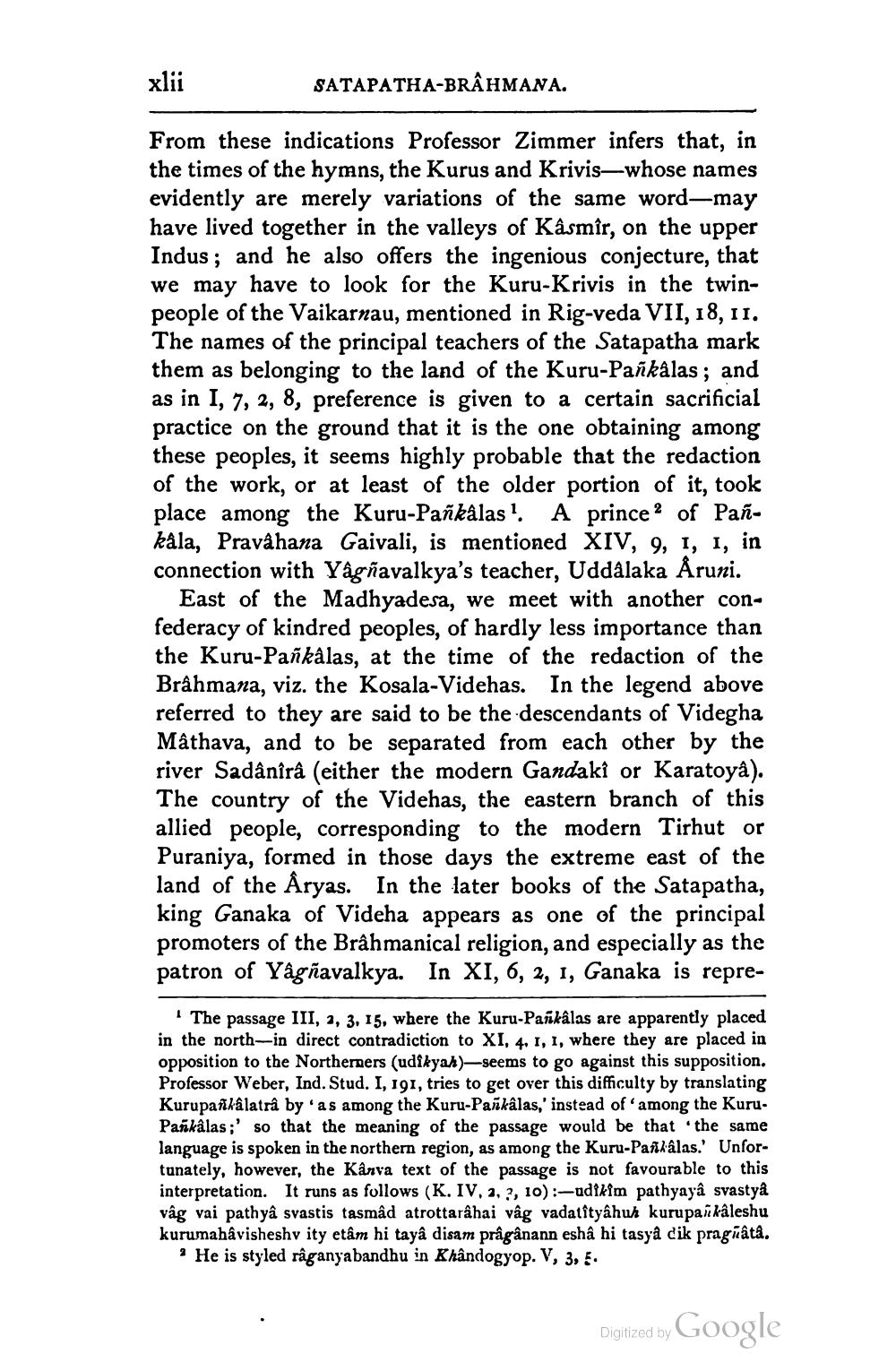________________
xlii
SATAPATHA-BRAHMANA.
From these indications Professor Zimmer infers that, in the times of the hymns, the Kurus and Krivis—whose names evidently are merely variations of the same word—may have lived together in the valleys of Kâsmîr, on the upper Indus; and he also offers the ingenious conjecture, that we may have to look for the Kuru-Krivis in the twinpeople of the Vaikarnau, mentioned in Rig-veda VII, 18, 11. The names of the principal teachers of the Satapatha mark them as belonging to the land of the Kuru-Pankalas; and as in 1, 7, 2, 8, preference is given to a certain sacrificial practice on the ground that it is the one obtaining among these peoples, it seems highly probable that the redaction of the work, or at least of the older portion of it, took place among the Kuru-Pañkalas? A prince of Pankåla, Praváhana Gaivali, is mentioned XIV, 9, 1, 1, in connection with Yâgñavalkya's teacher, Uddalaka Åruni.
East of the Madhyadesa, we meet with another confederacy of kindred peoples, of hardly less importance than the Kuru-Pañkalas, at the time of the redaction of the Brâhmana, viz. the Kosala-Videhas. In the legend above referred to they are said to be the descendants of Videgha Mâthava, and to be separated from each other by the river Sadânîrâ (either the modern Gandaki or Karatoya). The country of the Videhas, the eastern branch of this allied people, corresponding to the modern Tirhut or Puraniya, formed in those days the extreme east of the land of the Åryas. In the later books of the Satapatha, king Ganaka of Videha appears as one of the principal promoters of the Brâhmanical religion, and especially as the patron of Yågñavalkya. In XI, 6, 2, 1, Ganaka is repre
The passage III, 2, 3, 15, where the Kuru-Pankalas are apparently placed in the north-in direct contradiction to XI, 4, 1, 1, where they are placed in opposition to the Northerners (udikyal)-seems to go against this supposition. Professor Weber, Ind. Stud. I, 191, tries to get over this difficulty by translating Kurupankälatra by as among the Kuru-Pankalas,' instead of among the Kuru. Pankalas;' so that the meaning of the passage would be that the same language is spoken in the northern region, as among the Kuru-Pankálas. Unfortunately, however, the Kanva text of the passage is not favourable to this interpretation. It runs as follows (K. IV, 2, 3, 10):-odikim pathyayâ svastyå vag vai pathyâ svastis tasmâd atrottarâhai våg vadatîtyâhuh kurupan kâleshu kurumahavisheshvity etâm hi tayâ disam prägânann eshâ hi tasya dik pragnâtå.
He is styled râganyabandhu in Khandogyop. V, 3, 5.
Digitized by Google




